Interior finishes and infectious disease: Dos and donts from a veterinary architect
As veterinary hospitals get more creative in design and look less like hospitals, its still important to use easy-to-clean finishes. Follow these tips from Heather Lewis, our favorite neat freak.
Over the years, a focus on creating more welcoming, home-like atmospheres has driven design in veterinary facilities to new heights. In some cases, you'd think you'd walked into a spa, not a clinic. This is wonderful for patients but sometimes means that material choices are chosen for aesthetic reasons rather than cleanliness and sterilization standards. This can be a nightmare in the face of an outbreak of infectious disease. Use these tips from Heather Lewis, AIA, NCARB, of Animal Arts in Boulder, Colorado, to keep your hospital pretty as well as cleanable.
> Do: Put cat shelves and boxes in your exam that are easy to clean and disinfect.
> Don't: Install carpeted cat trees that are difficult to keep sanitized.
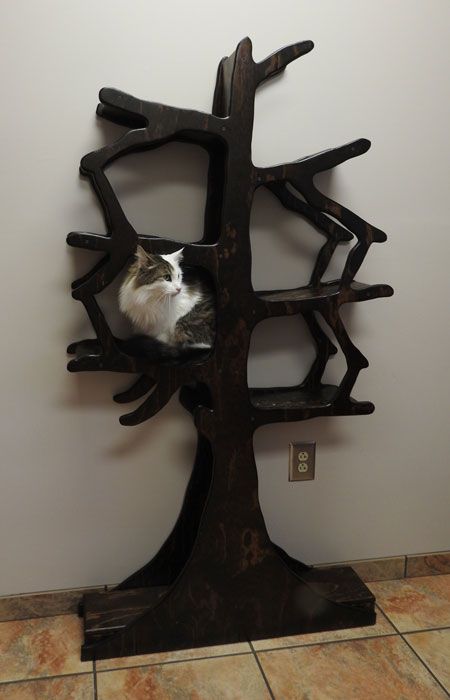
Veterinary Healthcare Associates, in North Augusta, South Carolina, has literal cat "trees" in their feline exam room, made of easily disinfectable material. | Photo courtesy of Samantha Thomas
> Do: Use the variety of new flooring products that are available to make your hospital feel welcoming and warm.
> Don't: Use difficult-to-clean flooring in surgery rooms.
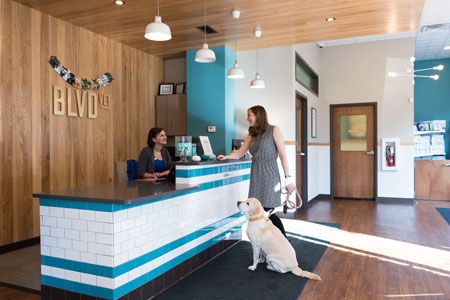
Boulevard Veterinary, in Chicago, Illinois, uses wood-look plank flooring to create a welcoming reception area. | Photo courtesy of Aaron Gang, Aaron Gang Photography
> Do: Create opportunities for dogs to play with water and other enrichment items in boarding areas.
> Don't: Create built-in infrastructure that can't be cleaned and sanitized, like doggy water fountains. Plastic baby pools work well as an alternative.
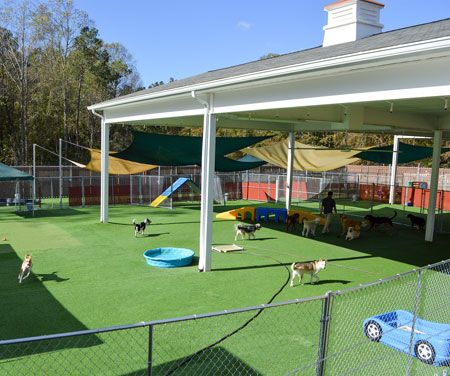
Carolina Ranch Animal Hospital & Pet Resort in Garner, North Carolina, uses plastic baby pools in their resort area to let their campers splash around. | Photo courtesy of Paul Potera
> Do: Use artificial turf in areas where healthy pets play.
> Don't: Use artificial turf as the only option for play and walking. Concrete or rubber flooring is better for areas where ill dogs are-it's easier to disinfect. Use turf outside unless it's well drained-it will get stinky.
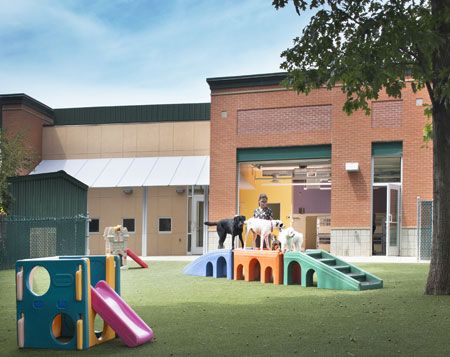
Outdoor turf works like a charm for Village Veterinary Clinic of Hamburg, in Hamburg, New York. | Photo courtesy of Tim Murphy, Murphy Foto Imagery
> Do: Use natural wood accents for trim, ceilings and cabinets.
> Don't: Use rough wood low on walls or on seating, where it will be hard to clean.
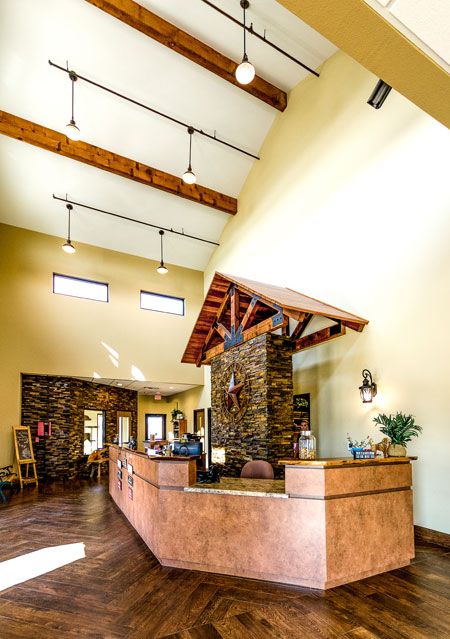
Natural wood on the ceiling and top of the reception desk feature brings charm to Sachse Veterinary Hospital in Sachse, Texas. | Photo courtesy of Sal Longo Jr.
> Do: Create a fancy reception desk with modern, cleanable materials.
> Don't: Use hard-to-clean materials for the desk, such as natural wood. Avoid rough stone as well unless you're uber-careful with the sealing-it has to be done meticulously.
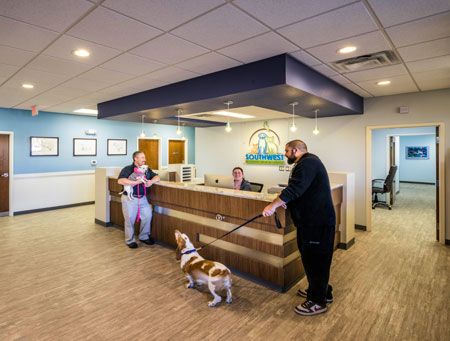
Southwest Veterinary Medical Center in Albuquerque, New Mexico, uses sleek (and cleanable!) materials on their modern reception desk. | Photo courtesy of Kirk Gittings, Kirk Gittings Photography
Heather Lewis, AIA, NCARB, is a partner at Animal Arts, an architecture firm in Boulder, Colorado. She's a lighting geek and a (seriously) devoted advocate of minimizing pets' stress and anxiety during their veterinary visits. She has designed practices and shelters that range in size from 1,200 square feet to 110,000 square feet. During grad school (as a break from “architorture”) she trained miniature horses to pull carts!